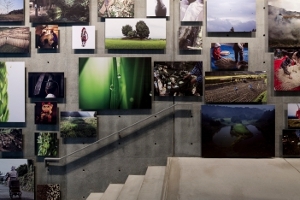
21_21 DESIGN SIGHT holds “KOME : The Art of Rice” Exhibition starting February 28, 2014. Rice (kome) is a very immediate part of lives in Japan. It is an integral aspect of everyday life. Many facets of Japan’s culture evolved in conjunction with the history of rice cultivation, and dietary culture became increasingly rice-based. That said, one question that may be posed is : How much do we know about rice apart from as a food? The paddies in which rice plants bear grains are ecosystems that take on and nurture diverse forms of life. They also help preserve natural cycles, functioning as water storage systems and mechanisms that prevent environmental warming.
The typical bowl of tasty boiled rice served as part of a meal consists of roughly 3,000 grains of rice, which is the yield of three bundles of rice stalks. Each one of those grains represents the tireless work and ingenuity of generations upon generations of people who have been involved in the cultivation of rice, as well as storing stocks of the Earth’s vast, cyclical energy. “They are living things, they are precision machines.” In the course of his own labors in cultivating rice, the poet Kenji Miyazawa succinctly captured the essence of rice with this phrase. In Japan, rice is a hub that links real staples of life with culture. The intricate environmental systems that make possible rice and its associated elements of culture possess many clues that bring us closer to the essence of design, clues from which we should learn. These clues will doubtlessly lead to many new forms of aesthetic “sustenance” that will define new futures.
As we enter a transitional period marked by volatile changes in the global environment, individual life style and collective values, and as rice’s position as the key staple food in the Japanese diet teeters, this exhibition aims to take a fresh look at rice as the foundation of Japanese culture. Therefore, the goal is to engage exhibit visitors, compel them to take a new look and rethink rice as an important subject of Japanese society as a whole, and to get them to think about the future of rice.
 Rss feed
Rss feed Rss feed
Rss feed